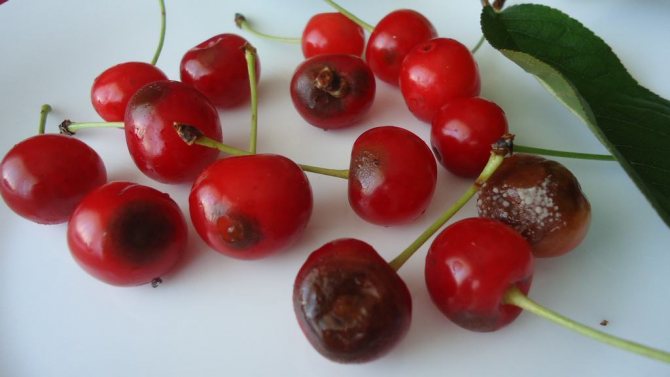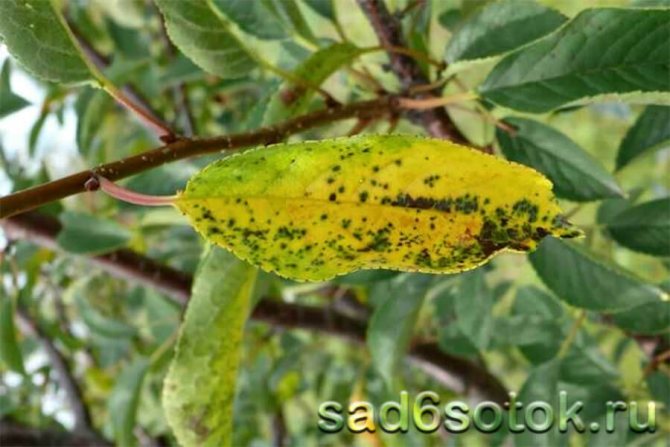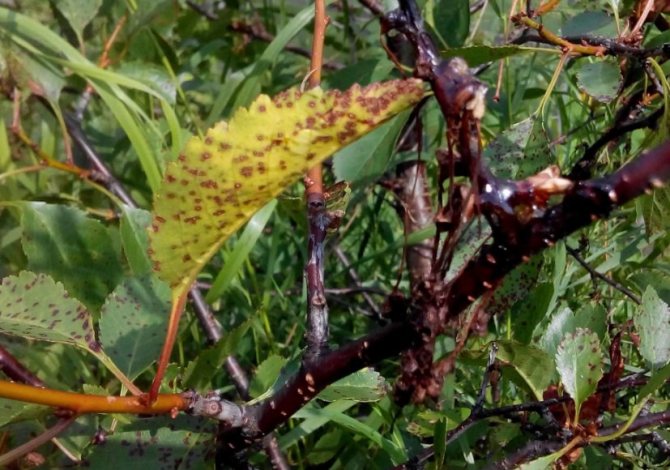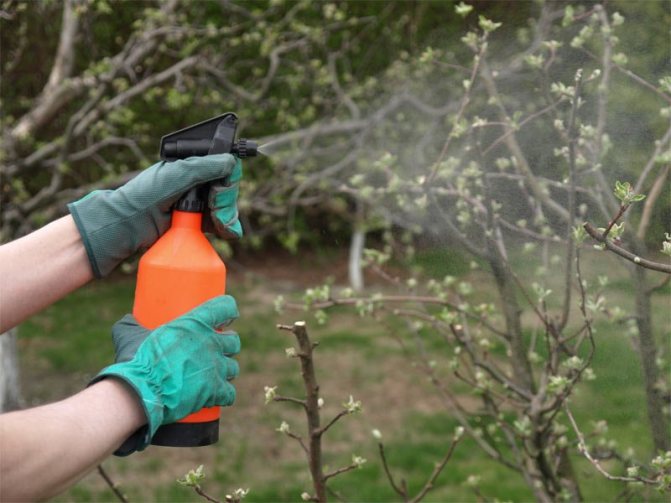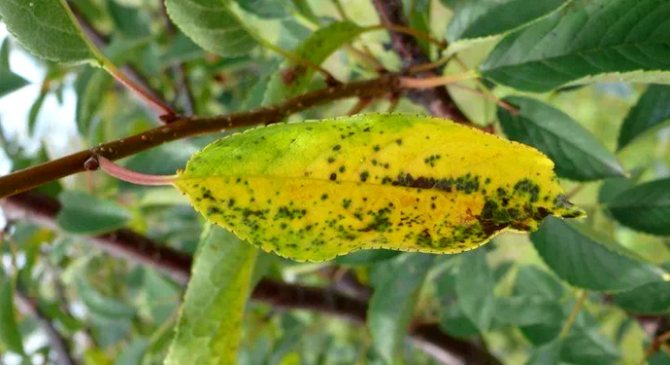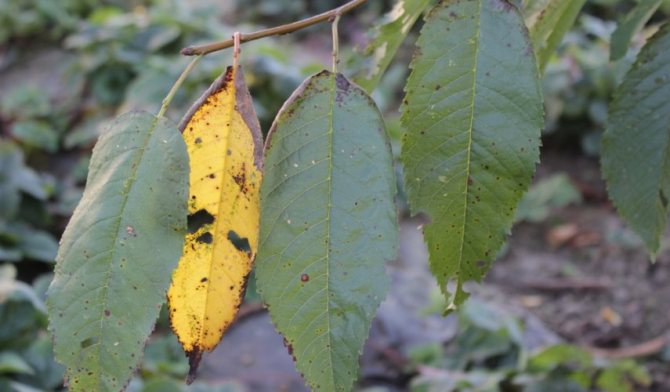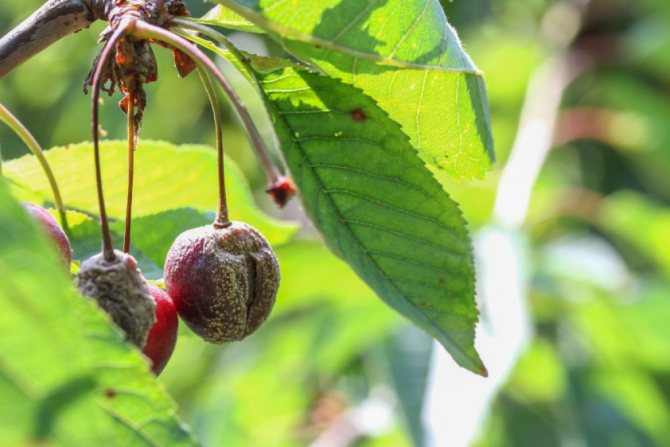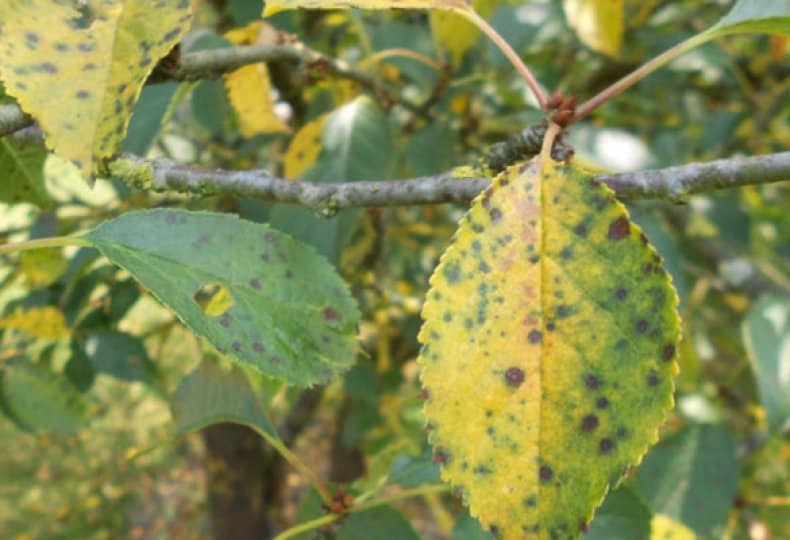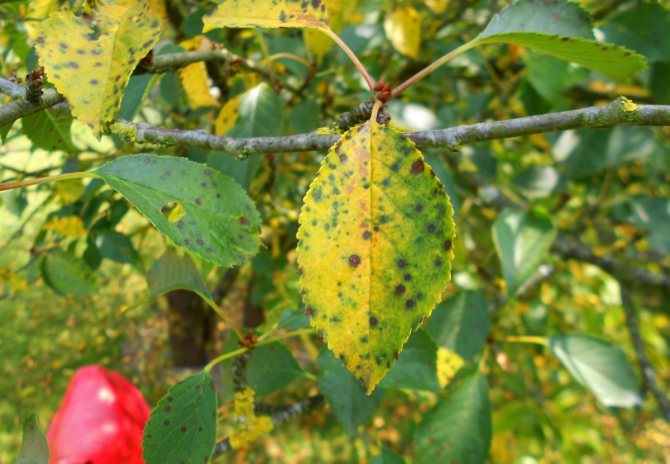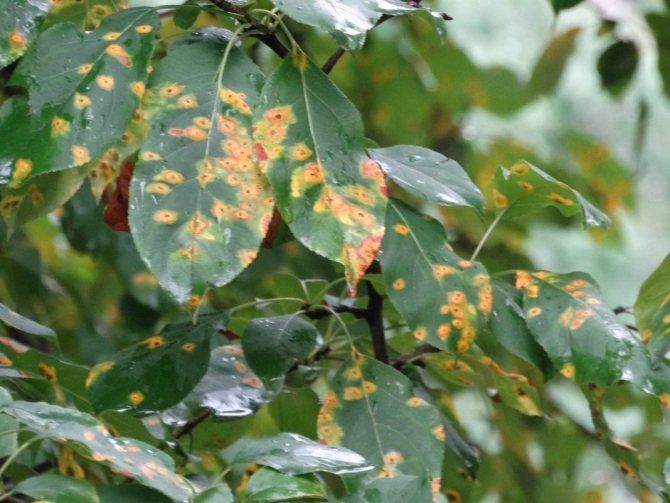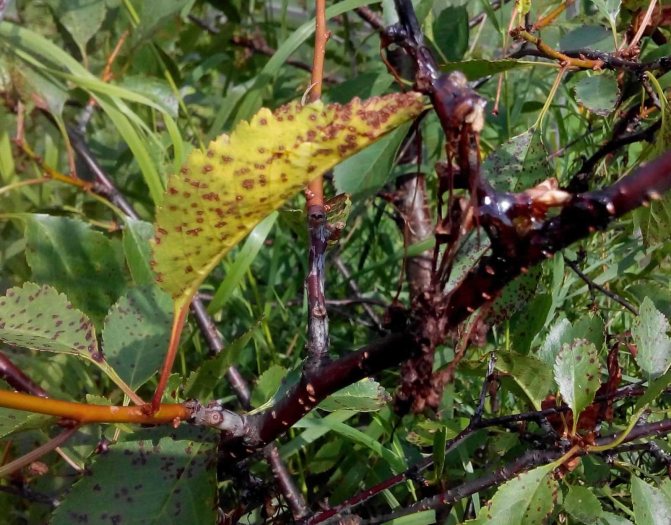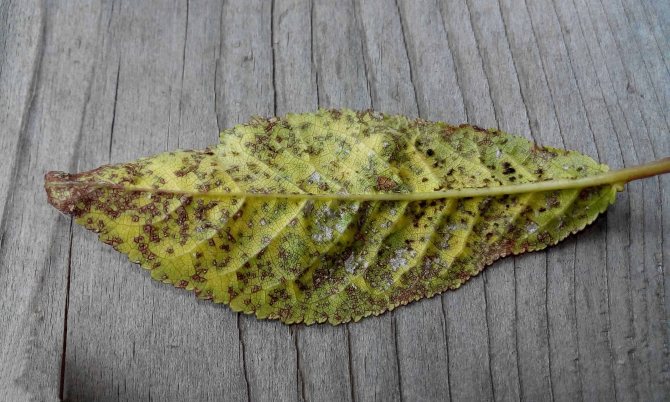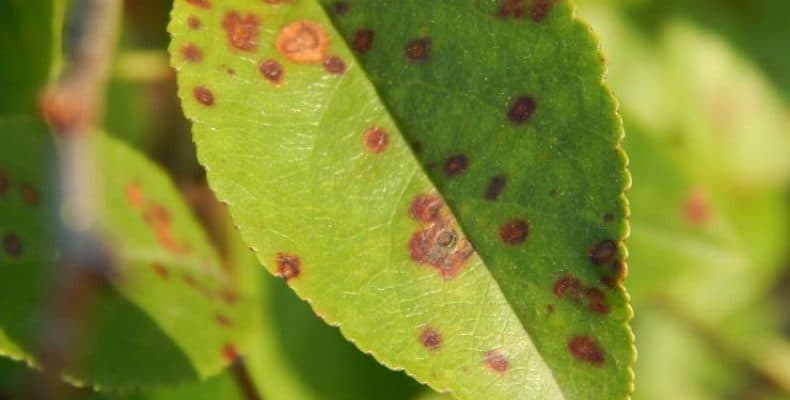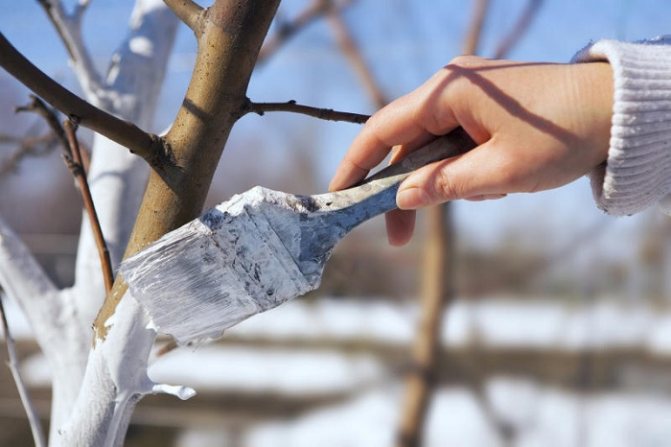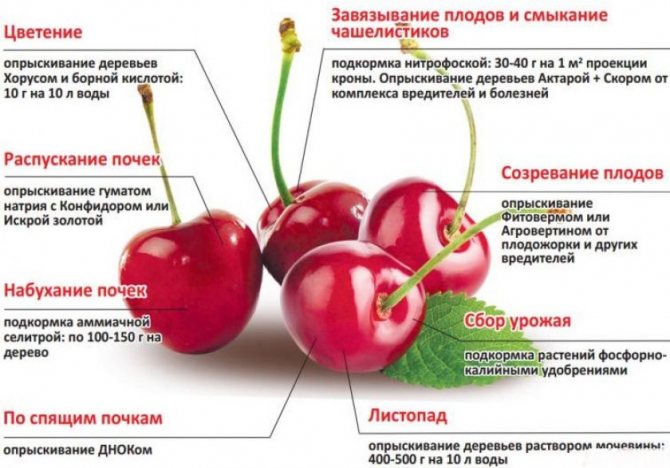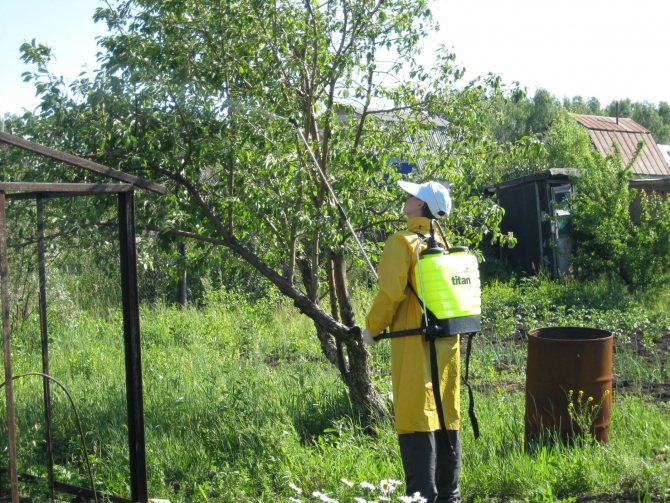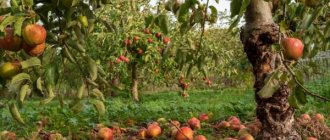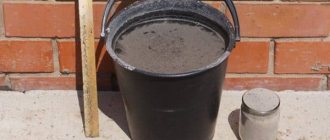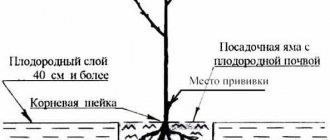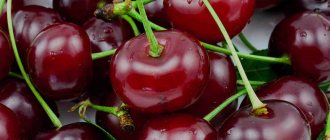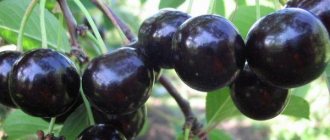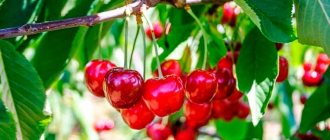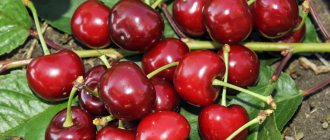Coccomycosis is a dangerous fungal disease of stone fruit trees (cherries and cherries, to a lesser extent plums) caused by the marsupial fungus Sossomuse hiemalis. In the central regions of Russia, the disease of fruit trees appeared relatively recently, in the 60s of the last century, and was brought from Western Europe. The disease mainly affects the leaves, on which small separate, then merging reddish spots are formed. Quite often, the disease affects not only the leaves, but also the stalks and fruits. Consider how the disease develops and what measures to take to prevent it.
Causes of the appearance of coccomycosis
The main cause of coccomycosis in the garden:
- thickened crown;
- the surface of the trunk circle overgrown with weeds or young shoots;
- the disease more easily affects trees with cracked bark and gum deposits;
- the main cause of fungal damage to plants is a warm and humid climate, with prolonged rains and winds. The wind carries disease-causing spores over long distances.
One of 2 harmful microorganisms is the "culprit" of the disease of cherries of the varieties Uralskaya Rubinovaya, Shubinka, as well as others:
- "Blumeriella jaapii" - the fungus has been known since the middle of the last century;
- A number of biologists consider the causative agent, a fungus "Coccomyces hiemalis", known to scientists since 1847.
Regardless of the species, the disease attacks plants imperceptibly, quickly affecting the entire garden. An inexperienced gardener can only be surprised at the August leaf fall, but will not understand that the disease has begun to adversely affect the cherry.
What is the danger of the disease
Coccomycosis and moliniosis are diseases that not only reduce the quality and quantity of the crop, but can lead to the death of a tree or an entire garden. In addition to poor response to treatment, these diseases are dangerous for their ability to quickly infect neighboring plants, be carried by the wind, insects, rain, and groundwater.
The fungus significantly weakens the cherry tree, disrupts the internal processes of photosynthesis. Young, weak representatives become unadapted to frost, very often they do not survive the winter. Even if the plant survived, without treatment the next year will bring a low yield, the fruits will lose all their benefits and taste.
Symptoms of defeat
The disease is more often manifested in Central Russia and in the Non-Black Earth Region. For the southern regions, in places with a minimum amount of rain, the possibility of fungal growth is minimal. For the fight, recipes of traditional medicine or treatment with medicinal preparations are used. In the south, it will be necessary to carry out preventive treatments by introducing drugs into a pest control solution.
The fungus is resistant to low temperatures, even in the northern regions. Spores take refuge in fallen leaves, old fruits, and cracks in the bark and gum.

With the onset of a warm period, the wind carries spores around the garden - this is how the spread and the next stage of the disease occurs.
The first symptom of the disease is the appearance on the foliage of small spots with a white - red color. Then the spots grow together into large areas, become brown or brown in color, and after 45-60 days, the affected leaves crumble from the tree.
Moreover, part of the leaf may crumble or, if the petioles are damaged, a period of early leaf fall begins. Fruits are also affected, they are deformed and become unusable. After wintering, in April - May, the first maturation of spores occurs, which is carried throughout the garden by wind and moisture evaporation. Therefore, the first signs appear on the lower part of the trees.
Not on time started treatment of trees leads not only to loss of foliage and weakening of the tree, but also to a decrease in yield. Fruits ripen dried, almost covered with a thin skin stone.
Signs
- The disease begins to appear in late May - early June. Mainly affected are cherry, sweet cherry, bird cherry, apple, plum and apricot.
- Causes small spots of reddish-brown color, no more than two millimeters in diameter. Over time, if you do not take serious measures, the specks grow and affect the entire plant. On the back of the leaf, pink or gray-white clumps of fungus form.


You can recognize a tree affected by disease spores by its leaves. At the beginning, reddish spots appear on them (up to 2 mm in diameter), which quickly increase in size, after 1-2 weeks they merge in many places into solid brown-brown areas. The leaves turn yellow, new spores develop on their inner side in the form of a pinkish fluffy bloom.
The first signs appear on the tree approximately with flowering (May-June). Covering the entire leaf, disrupting metabolic processes in it, the fungus leads to early baldness of the fruit representative, which can shed all the foliage in July-August. Sometimes the disease captures the fruits, which are covered with dark spots, poorly filled with juice, practically have no inner pulp.
Almost all stone fruit representatives of the flora living in the northern, central regions are susceptible to the disease. The spread of the disease occurs in high humidity, cool weather, and frequent rains. Less risk of infection in southern latitudes, where the climate is characterized by high temperatures and low air humidity.
Treatment
It is important to start operations to destroy the spores of pathogenic fungi immediately at the first signs of damage to the tree. It is important for the gardener to choose the right variety that is resistant to coccomycosis and other fungi. Plants, even those with an increased level of disease resistance, can be attacked by spores over a long period of their growth.
A weakened tree in a rainy and warm period is not able to resist disease-causing spores and pests. But such varieties of cherries reduce the risk and reduce the number of treatments of the garden with chemicals and solutions of traditional medicine. As in the fight against other types of fungi, at an early stage it helps to defeat the disease, treatment of plants with copper or iron sulfate, as well as preventive whitewashing of trunks and the beginning of skeletal branches with lime. Find out about the healing properties of Indian onions in this article.
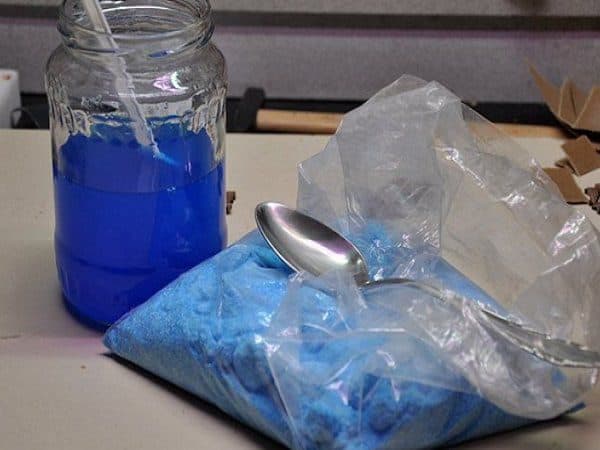

Copper sulfate solution.
Let us analyze in detail each method of treating cherry trees affected by coccomycosis.
Chemicals
Here, the treatment of plants with solutions of any better copper-containing fungicide comes to the aid of gardeners. In a specialized store, summer residents will find many new and time-tested drugs. The main thing is to purchase a quality product and properly process the plants with it.
The very process of spraying the foliage and the entire tree as a whole should be carried out with full responsibility, in the same way as when a sick person is taking antibiotics. Chemicals must be diluted strictly according to the proportions indicated on the packaging. We will give in a separate table the rules and regulations for the preparation of solutions using basic chemicals.
| The name of the chemical control agent. | The required proportion of the substance for dilution in 10 liters of water. | The maximum number of operations to combat fungi. | The minimum number of days before the possible consumption of cherries. |
| A solution of "Bordeaux liquid" | Packing with 100 ml of substance. | 3 | 28. |
| The drug "Abiga - Peak". | 40 g or one cap of a large bottle. | 4 | 20 |
| "Speed" | 2 ml. | 2 | 21 |
| Horus. | 3.5 g | 2 | 15 |
| "HOM". | 40 g | 3 | 20 |
Chemical preparations are not recommended to be used before the cherry harvest, the table shows the waiting times, which must be strictly observed.
Many gardeners are against the use of chemicals in their garden and suggest using folk recipes. But only "Skor" or "Abiga-Peak" can quickly and reliably destroy disease-causing spores, especially in difficult cases. Traditional medicine helps only as a preventive measure or at an early stage of tree disease.
The chemicals, although costly to purchase, will reliably eradicate the disease at an early stage. And they will not allow spores to spread to neighboring stone fruit crops. To obtain an adult fruiting tree, you will need to care for and process the seedling for the first 5 years after planting. According to calculations, the minimum level of costs for drugs and other needs during this period, the gardener will have to pay about 3 tons of rubles. But on processing and combating the disease, you will need to spend at least 6 thousand rubles per year. How to treat cherries from worms and other insects read here.
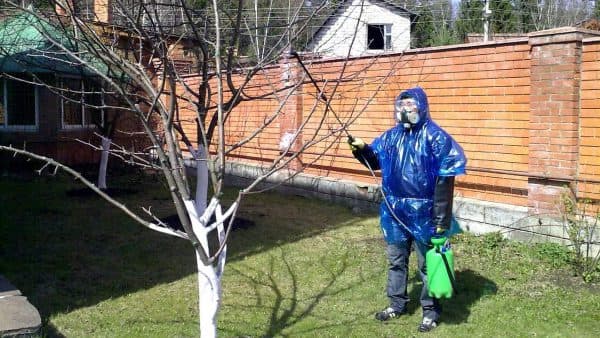

Carrying out preventive treatments of the garden is preferable to the costs of rescuing horticultural stone fruit crops affected by coccomycosis.
Biologicals and folk recipes
According to manufacturers of expensive biological control agents for fungal spores, this is a safe for humans, but an effective method of combating coccomycosis. But adherents of chemical treatment, argue that it is better to spray the garden with a simple and harmless preparation "Abiga-Peak" than to use the expensive biological fungicide "Fitosporin".
The biological product, after application to the foliage, causes the growth of bacteria that feed on the spores of various fungi. The action of the drug is absolutely harmless to humans; plants can be processed immediately before harvesting. "Fitosporin" is harmless to the plant itself, as well as folk recipes. Plants can be treated with these preparations during the flowering and fruiting period of stone fruits. This material will tell you about the characteristics and description of the Orange tomato variety.
Among the popular recipes, we single out one effective composition:
- water - 5 l;
- sifted wood ash - 1 kg;
- laundry or tar soap - 30 g.
All ingredients are mixed, the solution is filtered and poured into the sprayer tank. With such a solution, it is recommended to carry out weekly treatments of problem gardens with the onset of a warm period.
Regardless of the composition and type of the preparation, processing is carried out only in the early morning or in cloudy weather. The solution is evenly applied to all surfaces of wood and foliage. Particular attention to areas with cracked bark, gum deposits, soil around the tree and the lower surfaces of foliage are places where fungi accumulate.
Agrotechnical methods
Agricultural technology in the fight against any fungi is the same. Required:
- constantly remove weeds and young growth under the cherry crown;
- in the fall, during the period of leaf fall or with early fall of foliage on a diseased tree, all leaves are taken outside the site and burned in a special barrel or taken to garbage containers;
- in the pre-winter period, all unpicked fruits are removed from the branches and disposed of in garbage containers;
- the soil in the near-trunk circle should be loose and mulched;
- to reduce evaporation, it is recommended to use a drip irrigation system;
- in late autumn, the soil under the bush is cleared of plant debris and dug up, and young trees are additionally covered with material or old roofing material;
- all areas with emerging moss and places of cuts are cleaned and covered with garden varnish.
Find out about planting and caring for the Bessonovsky bow here.
Chemical treatment of the plant
Even the most thorough care of a cherry orchard does not give a full guarantee of protection against fungal diseases, so prevention should be a prerequisite. Measures to combat coccomycosis and moniliosis include mandatory chemical treatment, which begins in early spring. Spraying is carried out until bud break when the tree is still in a state of "sleep". This is done in order to get rid of fungi that remained after winter in the bark of a tree or in fallen leaves. Re-chemical treatment is carried out after flowering is complete. It is at this stage that the spores of pathogenic fungi mature and are thrown into the air, settling on the leaves of the cherry.


The third treatment is recommended after harvest, even if no symptoms of the disease are found on the tree. After the foliage has fallen, the cherry trees are sprayed again. For the first and last spraying, a solution of Bordeaux 3% and ferrous sulfate 1% is used. After flowering, it is recommended to carry out a chemical treatment of cherries with iron sulfate 0.4%. If obvious symptoms of diseases were noticed in the garden, then it is worth deviating from the above treatment regimen and applying fungicides. These modern preparations are more effective and able to protect cherries. Coccomycosis and moniliosis recedes after treatment:
- Nitrafen;
- Cinebroma;
- Kaptan;
- Phthalan.
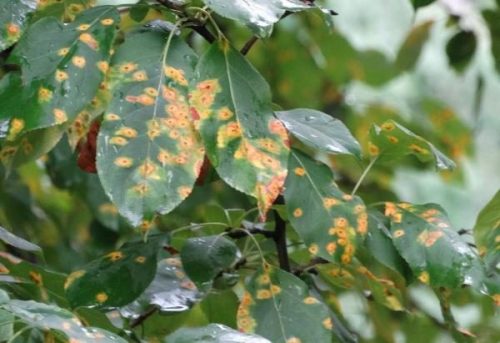

List of resistant varieties
The main way to reduce the risk of coccomycosis damage to cherries is to plant zoned varieties that are resistant to fungal diseases. First of all, this is a low-growing felt cherry, among the other options are:
- "Shokoladnitsa".
- "Gurtyevka".
- "Vocation".
- "Turgenevka".
- Bulatnikovskaya.
- "Princess".
- "Chernokorka".
- "Story".
The list goes on, but before buying a seedling from the nursery, it is better to ask the manager about the best variety for your climatic zone. These varieties may not be able to grow and bear fruit if they are not regionalized for a particular climate.
Preventive measures
There are a number of mistakes gardeners make when caring for fruit trees in orchards. Inappropriate actions contribute to the spread of the disease and interfere with the normal functioning of plants.
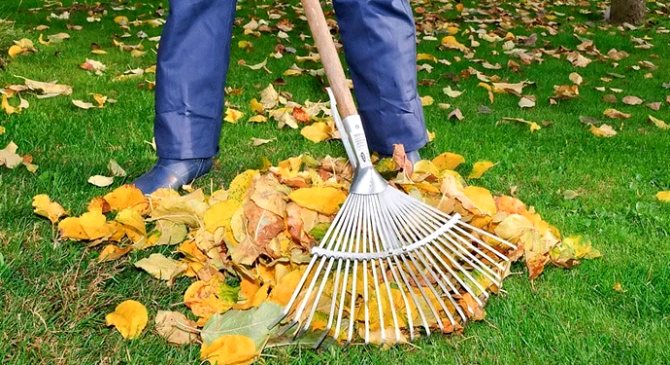

- Incorrect processing of fallen leaves and harvesting. Leaves affected by infection should not be placed in the compost pit or left in the garden. They must either be exported or burned.
- It is necessary to monitor the area near the tree trunk and weed weeds regularly. The adjacent soil must be systematically loosened for good air circulation. As soon as the onset of the disease is detected, the soil must be watered with fungicides, and the mulch layer must be removed from the site.
- Pruning of affected cherry shoots cannot be ignored. Pruning is recommended in spring and autumn.
- Cherries should be in a sufficiently lit area. The crown must be carefully thinned out. Where air circulates freely and there is enough sunlight, the fungus develops poorly.
Tip: Chemicals from pests can be added to the whitewash solution. This method will increase the effectiveness of whitewashing.
Prophylaxis
Preventive work in the garden will help prevent disease and ensure normal growth and fruiting of cherries:
- after winter, when the soil begins to warm up, you will need to dig up the ground on the site, after removing all the leaves and remnants of dry grass;
- The main concern of the gardener is to constantly examine the foliage of the trees and carry out preventive treatments of the garden.
Frequency of spraying and pruning cherries
Gardens, in which the appearance of spores of coccomycosis is possible, will need to be constantly monitored and carried out a number of treatments, according to the plan below:
- Early spring, before the beginning of bud awakening - control examination, identification of branches damaged after winter and performing sanitary pruning of cherries.
- The unblown bud phase ("Green cone") - treatment of the trunk circle and the whole tree with a solution of copper sulfate or "Abiga-Peak". Application of nitrogen fertilizers.
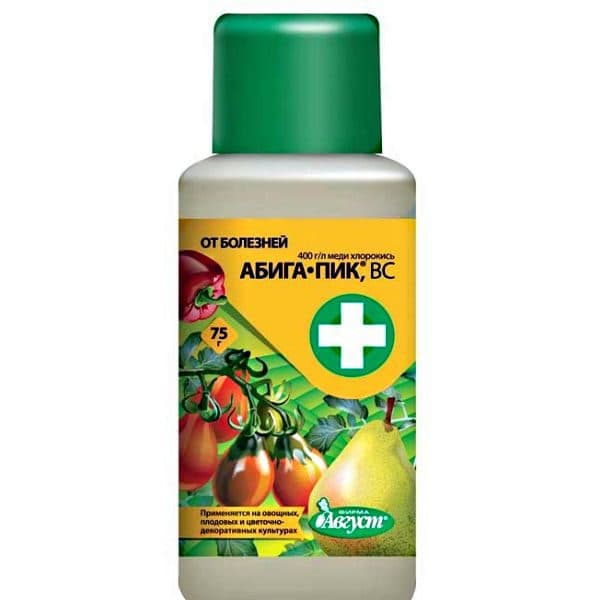

Abiga-peak is an improved conventional copper sulfate produced in liquid form.
- Budding - treatment with a solution of any fungicide.
- 20-21 days after the end of flowering - inspection of cherries, pruning and removal of damaged growths and branches from the site. Removal of gum and treatment of places with cracked bark with garden varnish. Spraying the plant with the "Skor" solution. If the spring is rainy, re-treatment with copper sulfate will be required.
- At the stage of maturation - foliar dressing is added to the fungicide solution. For this, you can use any ready-made fertilizer for this operation.
- The harvest is harvested treatment with a solution of "Bordeaux liquid" or a solution of soap and ash.
- In the pre-winter period - collection and removal of foliage, pruning of damaged shoots, and treatment of cracked bark with gum drips with garden varnish. Whitewashing the trunk and the beginning of the skeletal branches with a solution of lime.
- Autumn digging soil and pre-winter watering of the tree with the introduction of potash - phosphorus fertilizers.
- In early spring trimming and shaping the crown of the tree, as well as removing the affected branches.
This link will tell you about the description of the onion variety Radar.
Folk remedies
The experience of gardeners and people growing stone fruit plants suggests that folk recipes are ineffective in the fight against the fungus that has already taken root on the foliage. However, they can be used for preventive purposes or to suspend, reduce the rate of development of spores during the flowering period, the formation of ovaries, and the growth of fruits. Such a measure is justified, since chemical treatments can spoil the quality of the crop and make it harmful to human health.
Folk remedies include:
- ash and soap mixture (for 10 liters of water, 2-2.5 kg of ash, 60-65 grams of grated laundry soap are used);
- iodine solution (40-45 drops of iodine are used for 10 liters of water).
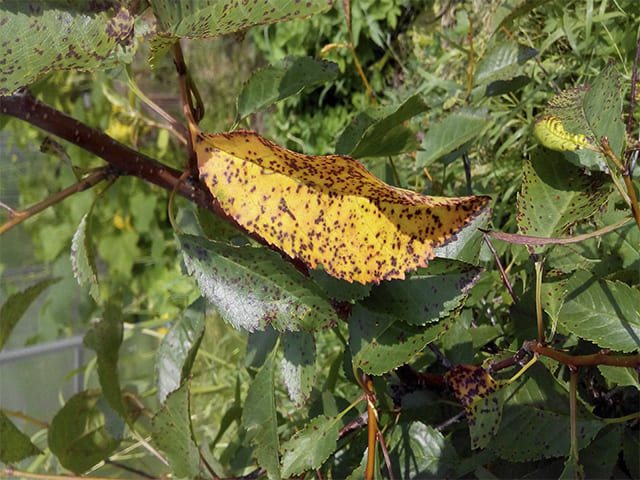

A mixture of ash and soap is allowed to process foliage, branches every 10-12 days. Means with iodine are not used during flowering, fruit development.
A way to increase the immunity of cherries and cherries
Immunization of fruit trees is an important measure to prevent any infections. You can increase the resistance of plants with the help of phosphorus-potassium fertilizers.
In early spring, cherries and cherries are given root dressing "Diammofoskoy" - 1 tablespoon per 1 m2 of trunk circle. Fertilizer is embedded in the soil.
During the period of flowering and pouring of fruits, foliar dressing is carried out with the drug "Kafom K"... Spraying on a leaf promotes instant nutrient uptake by plants. You can use another drug for this - "Nutri-Fight RK".
In late August or early September, fertilizers are applied to the soil. "Fertika Autumn" gardeners' reviews about Fertika or AGRECOL "Autumn Nitrogen Free" reviews of gardeners about fertilizer Agricola. They help accelerate the maturation of wood and increase the winter hardiness of weakened trees.


